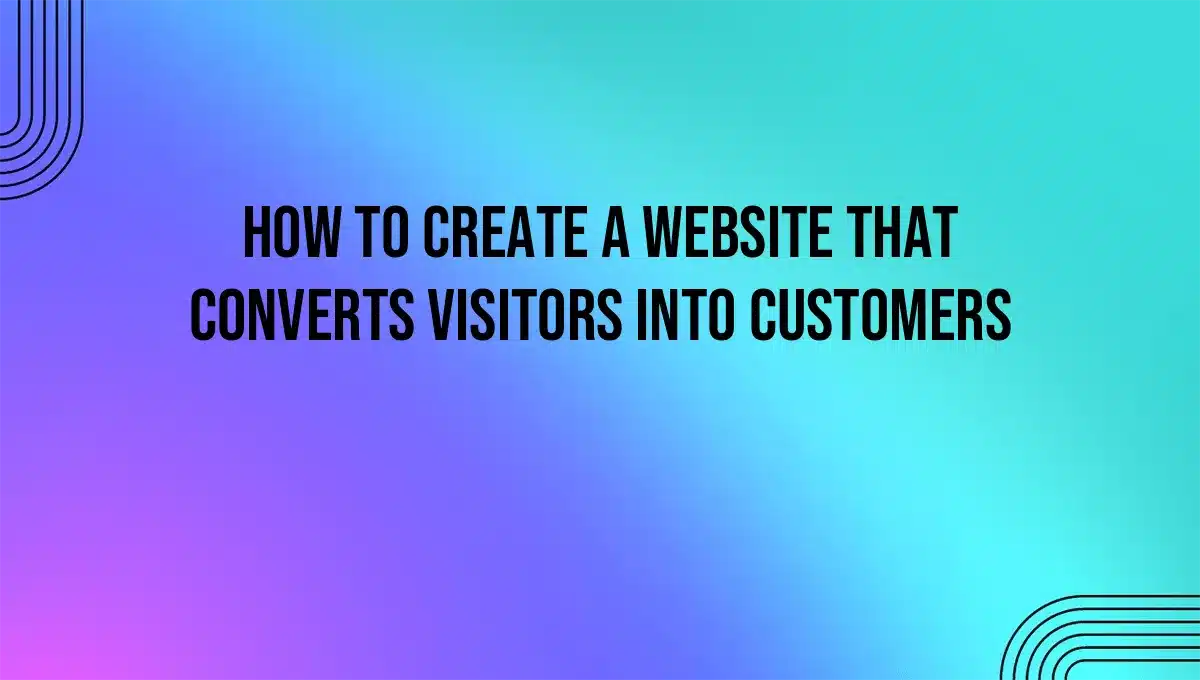Introduction
In today’s digital landscape, simply having a website isn’t enough. Your website needs to be more than just an online presence; it must serve as a powerful tool to convert visitors into customers. This is where a conversion-focused web design comes into play. By crafting your website with conversions in mind, you can significantly boost your business’s sales and overall growth.
Understanding Conversion-Focused Web Design
What is Conversion-Focused Web Design?
Conversion-focused web design is a strategic approach to website creation that prioritizes turning visitors into customers. It involves designing every element of your website—from layout and navigation to content and call-to-actions—with the goal of maximizing conversion rates.
Why Conversion-Focused Design Matters
A website designed with conversion in mind is more likely to engage visitors, guide them through the buyer’s journey, and encourage them to take action. Whether your goal is to increase sales, generate leads, or grow your email list, a well-optimized website is essential.
Key Elements of a Conversion-Focused Website
Clear and Compelling Call-to-Actions (CTAs)
CTAs are critical in guiding users toward the actions you want them to take, whether it’s making a purchase, signing up for a newsletter, or filling out a contact form. Ensure your CTAs are prominently placed, use action-oriented language, and stand out visually from the rest of your content.
User-Friendly Navigation
A website with intuitive navigation helps users find what they need quickly, reducing the chance of them leaving out of frustration. A clear menu, well-organized content, and easy-to-find contact information are all essential components.
Mobile Responsiveness
With an increasing number of users accessing websites via mobile devices, ensuring your website is fully responsive is non-negotiable. A mobile-responsive design adapts to different screen sizes, providing a seamless experience regardless of the device used.
Fast Loading Times
A slow-loading website can frustrate users and lead to high bounce rates. Optimize images, leverage browser caching, and minimize HTTP requests to ensure your website loads quickly.
Trust Signals and Social Proof
Incorporate elements such as customer testimonials, reviews, trust badges, and case studies to build credibility. These trust signals can reassure potential customers of your reliability and increase their likelihood of conversion.
High-Quality Visuals and Content
Visual appeal matters, but so does the quality of the content. Use professional images, videos, and infographics to capture attention, and back them up with informative, well-written content that addresses your audience’s needs and pain points.
Optimizing Your Website for Conversions
A/B Testing for Continuous Improvement
A/B testing involves creating two versions of a webpage to see which performs better in terms of conversions. Test different headlines, CTAs, layouts, and images to continually refine your website’s effectiveness.
Using Analytics to Track and Improve Conversion Rates
Tools like Google Analytics allow you to track visitor behavior, identify drop-off points, and make data-driven decisions to improve your conversion rates. Regularly reviewing your analytics data is crucial for ongoing optimization.
The Role of SEO in Driving Conversions
SEO isn’t just about driving traffic—it’s about attracting the right kind of traffic. By targeting keywords that match your audience’s intent and optimizing your website for search engines, you can attract visitors who are more likely to convert.
Web Design Best Practices for Sales
Simplified Checkout Process
For e-commerce websites, a simplified checkout process can significantly reduce cart abandonment rates. Minimize the steps required to complete a purchase, offer multiple payment options, and ensure the process is secure.
Personalized User Experience
Personalization can greatly enhance user engagement and conversions. Use data to offer personalized product recommendations, tailor content to user interests, and create a more relevant shopping experience.
Clear Value Proposition
Your value proposition should clearly communicate what sets your business apart from the competition. Make sure it’s prominently displayed on your homepage and resonates with your target audience’s needs.
Common Mistakes to Avoid in Conversion-Focused Web Design
Overloading the User with Information
While it’s important to provide valuable information, too much content can overwhelm users. Keep your messaging concise, and focus on the key points that will drive conversions.
Ignoring Mobile Users
Failing to optimize for mobile can lead to missed opportunities, as more people browse and shop via smartphones. Ensure your mobile site is as functional and appealing as the desktop version.
Poorly Designed CTAs
If your CTAs are hard to find or don’t stand out, visitors are less likely to take the desired action. Make sure your CTAs are visually distinct and strategically placed.
Conclusion
A well-designed, conversion-focused website is a powerful asset for any business. By focusing on key elements like CTAs, user-friendly navigation, mobile responsiveness, and trust signals, you can create a website that not only attracts visitors but also converts them into loyal customers, driving long-term business growth.
FAQs
The most important element is a clear and compelling CTA. It directs users to take the desired action, making it crucial for driving conversions.
You can improve your conversion rate by optimizing your website’s speed, simplifying navigation, using A/B testing, and ensuring your CTAs are effective.
Mobile responsiveness ensures that your website provides a seamless experience across all devices, which is essential as more users browse and shop via mobile. A non-responsive site can lead to a poor user experience and lower conversion rates.
Yes, SEO can significantly impact conversions by attracting high-quality, intent-driven traffic to your site. When users find exactly what they’re looking for, they are more likely to convert.





